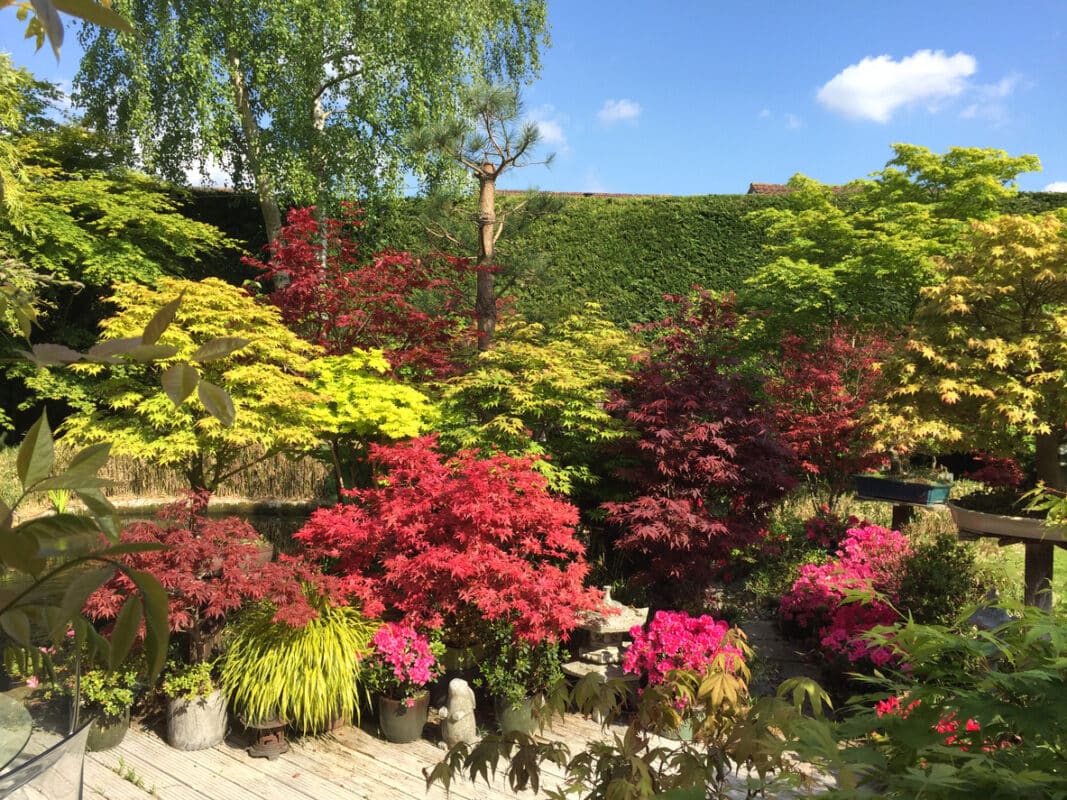gardens
Alfresco Living – Plants to Keep the Wind off
You can spend time outdoors in comfort all year round when you own a chiminea. But even on a warm summer’s night, a stiff breeze or sneaky wind can soon make you feel less than perfectly comfortable. Luckily there are many ways to create a sheltered spot in your garden for alfresco entertainment, one of which includes plants to keep the wind off. Here’s how to make an effective garden windbreak.
The best garden windbreak designs for large spaces involve layers, sometimes as many as four rows of trees and shrubs: a row of tall evergreens goes closest to the house, with three rows of shorter trees and shrubs behind it. The design forces the wind away from the space behind it, up and away. For smaller gardens you can use plants to keep the wind off in a different way. Here goes.
Plants to keep the wind off a big outdoor space
Maybe your garden is big. If so, you have the space needed for a full-on windbreak. When choosing plants to keep the wind off, go for evergreens so your windbreak works all year long. Pick evergreens whose leaves and branches go down to the ground for your front layer, for example spruce, cedar, yew or Douglas fir. You can pick any sturdy shrub for the layers that go behind the evergreens to form the thick layer you need to stop the wind. Because cool air tends to collect at the base of the plants on the windy side, pick hardy ones.
Windbreak planting for smaller spaces and city gardens
In the city or for a smaller garden, a single row of small trees or tall shrubs will provide a good windbreak. Make them thick and evergreen and they’ll work throughout the year to help keep the wind away from your party space. Like bigger shrubs and trees in a large garden windbreak, trimming them back regularly means you get thicker growth so a better barrier against the wind. If you’re a creative type you could make it a topiary windbreak, cleverly cut and shaped to make animals, birds, balls and more while still doing the job is was designed for. Box and privet are also good choices, although box grows slowly and can succumb to box blight disease.
Other ways to shelter your outdoor party area
‘Hit and miss’ fencing is wonderful stuff. It’s a lot more expensive than ordinary solid garden fence panels. But if you live somewhere very windy, a place where ordinary fence panels get blown down every time there’s an above average wind, the clever hit and miss design sends some of the wind through the gaps, taking the strain off the fence and keeping it upright for longer.
It’s also possible to use temporary windbreaks. Plenty of people use temporary camping windbreaks, available cheaply on Amazon in various colours. Beach windbreaks, the ones with pointed wooden poles and fabric strung between, are also an excellent idea to keep the wind off as long as they’re not at risk of catching fire. Take care!
If you don’t want to be putting your windbreak up and taking it down all the time, go for something more permanent. The same goes if you’re not really into gardening and worry you’ll kill off a planted windbreak.
Here’s an idea for you – buy a load of willow withies, which grow when you push them into the ground, and create a living willow windbreak that’ll be bare but effective in winter and spring, leafy and beautiful in spring and summer. Poke them into the earth close together. Willow grows fast so it won’t take long to create something attractive and effective.
In an emergency, break the wind instantly and simply with a sheet or blanket nailed to a couple of posts. Result!
Caring for your planted windbreak
Windbreak plants will be exposed to the wind. That’s the idea. So they deserve a good start in life with the watering and nourishment they need to thrive, especially in dry spells. Deep watering helps them grow strong, deep roots. Don’t fertilise them until the first spring after planting, and use mulch to suppress grass and weeds while the plants get a grip of their new home and settle in.


